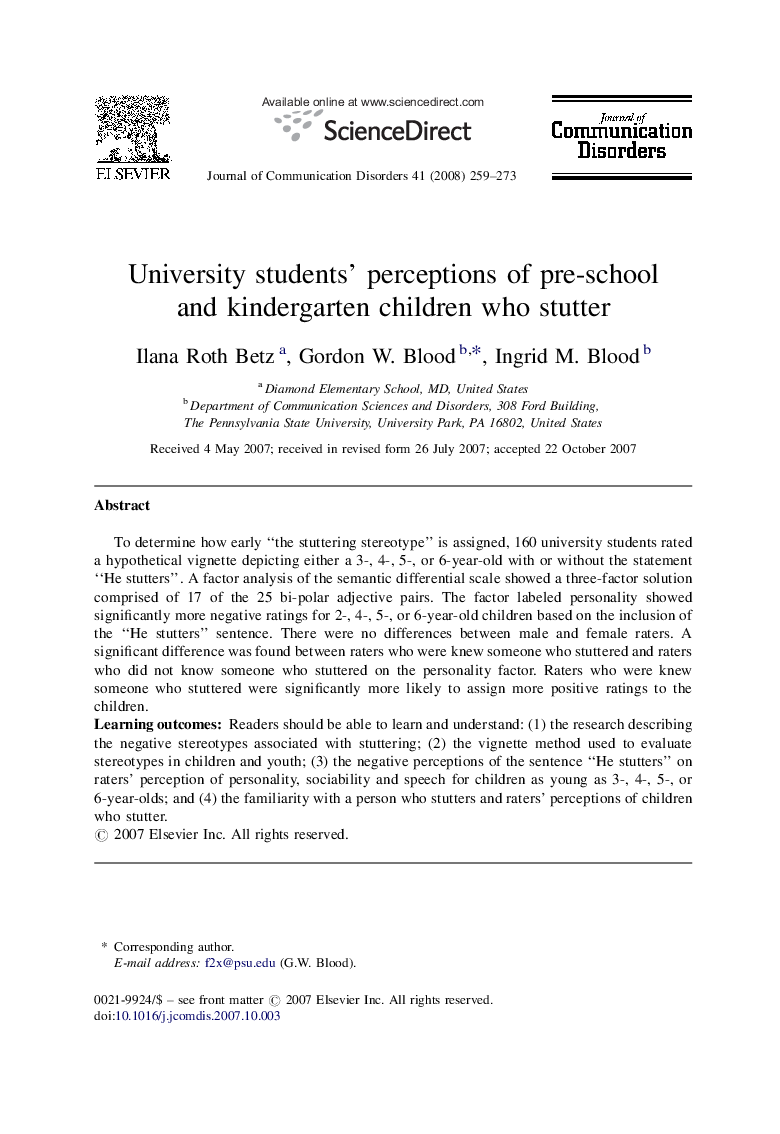| کد مقاله | کد نشریه | سال انتشار | مقاله انگلیسی | نسخه تمام متن |
|---|---|---|---|---|
| 910998 | 917674 | 2008 | 15 صفحه PDF | دانلود رایگان |

To determine how early “the stuttering stereotype” is assigned, 160 university students rated a hypothetical vignette depicting either a 3-, 4-, 5-, or 6-year-old with or without the statement “He stutters”. A factor analysis of the semantic differential scale showed a three-factor solution comprised of 17 of the 25 bi-polar adjective pairs. The factor labeled personality showed significantly more negative ratings for 2-, 4-, 5-, or 6-year-old children based on the inclusion of the “He stutters” sentence. There were no differences between male and female raters. A significant difference was found between raters who were knew someone who stuttered and raters who did not know someone who stuttered on the personality factor. Raters who were knew someone who stuttered were significantly more likely to assign more positive ratings to the children.Learning outcomesReaders should be able to learn and understand: (1) the research describing the negative stereotypes associated with stuttering; (2) the vignette method used to evaluate stereotypes in children and youth; (3) the negative perceptions of the sentence “He stutters” on raters’ perception of personality, sociability and speech for children as young as 3-, 4-, 5-, or 6-year-olds; and (4) the familiarity with a person who stutters and raters’ perceptions of children who stutter.
Journal: Journal of Communication Disorders - Volume 41, Issue 3, May–June 2008, Pages 259–273